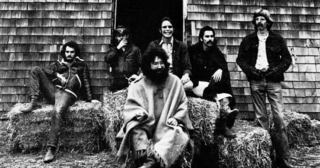
The Grateful Dead was an American rock band formed in Palo Alto, California in 1965. Known for their eclectic style that fused elements of rock, blues, jazz, folk, country, bluegrass, rock and roll, gospel, reggae, and world music with psychedelia, the band is famous for improvisation during their live performances, and for their devoted fan base, known as "Deadheads". According to the musician and writer Lenny Kaye, the music of the Grateful Dead "touches on ground that most other groups don't even know exists." For the range of their influences and the structure of their live performances, the Grateful Dead are considered "the pioneering godfathers of the jam band world".

Brent Mydland was an American keyboardist, songwriter and singer. He was a member of the rock band The Grateful Dead from 1979 to 1990, a longer tenure than any other keyboardist in the band.

Infrared Roses is a live compilation album by the Grateful Dead. It is a conglomeration of their famous improvisational segments "Drums" and "Space".

Terrapin Station is the ninth studio album by American rock band the Grateful Dead, released July 27, 1977. It was the first Grateful Dead album on Arista Records and the first studio album after the band returned to live touring.

Shakedown Street is the tenth studio album by rock band the Grateful Dead, released November 8, 1978, on Arista Records. The album came just over a year after previous studio album Terrapin Station. It was the final album for Keith and Donna Jean Godchaux, who left the band a few months after its release. The record was produced by Lowell George and John Kahn.

The Arista Years is a compilation album that chronicles the Grateful Dead's studio and live albums during their time with Arista Records. The album was released on two-CD and two cassette tapes on October 15, 1996. It contains tracks from Terrapin Station, Shakedown Street, Go to Heaven, Reckoning, Dead Set, In the Dark, Built to Last, and Without a Net. The set does not contain any new or expanded recordings. A media outlet sampler, Selections from the Arista Years, was released by Arista in January 1997.

Selections from the Arista Years is a compilation album that chronicles the Grateful Dead's studio and live albums during their time with Arista Records. This is a one-CD sampler sent to radio stations, record stores, and print media outlets by Arista to promote The Arista Years, which had come out several months earlier. As with The Arista Years, the album contains tracks from Terrapin Station, Shakedown Street, Go to Heaven, In the Dark, and Built to Last, and does not contain any new or expanded recordings.

Dick's Picks Volume 5 is the fifth live album in the Dick's Picks series of releases by the Grateful Dead. It was recorded on December 26, 1979, at the Oakland Auditorium Arena in Oakland, California. It was released in May 1996.

Go to Nassau is a two-CD live album by the rock group the Grateful Dead. It was recorded on May 15 and 16, 1980, at Nassau Coliseum in Uniondale, New York. The album, released in 2002, presents half of the songs played on the final two nights of a three-day run at the venue. It is sequenced to represent a prototypical single Dead concert, similarly to Without a Net. The shows were recorded for the King Biscuit Flower Hour and selections were originally broadcast on FM radio stations, on June 22, 1980. The album's title is a syllepsis, referring figuratively to the band's then-current album, Go to Heaven, and literally to the band going to Nassau County to perform.

Dead Ahead is a concert video by the Grateful Dead. It was recorded at Radio City Music Hall in New York City on October 30 and October 31, 1980, and released in 1981. An expanded version was released in 2005. In contrast to other Dead concert videos, Dead Ahead contains acoustic as well as electric song performances.
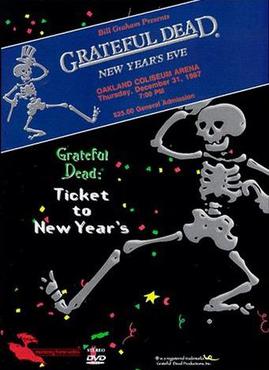
Ticket to New Year's is a concert video by the Grateful Dead. It was recorded at the Oakland Coliseum Arena in Oakland, California on December 31, 1987. It was released on VHS video tape and on Laserdisc in 1996, and on DVD in 1998.

Dead Ringers: The Making of Touch of Grey is a music documentary film about the American rock group the Grateful Dead. It depicts the production of the band's first music video, for their song "Touch of Grey".

Crimson White & Indigo is a live album by the American rock band the Grateful Dead. It contains the complete concert recorded at John F. Kennedy Stadium in Philadelphia on July 7, 1989. The album consists of three CDs, plus a video recording of the same show on one DVD. It was released on April 20, 2010. The video was produced and directed by Len Dell'Amico.
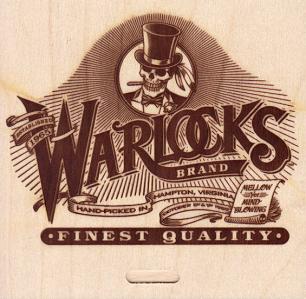
Formerly the Warlocks is a live album by the rock band the Grateful Dead. It contains two complete concerts on six CDs. It was recorded on October 8 and 9, 1989, at the Hampton Coliseum in Hampton, Virginia. It was released on September 7, 2010.
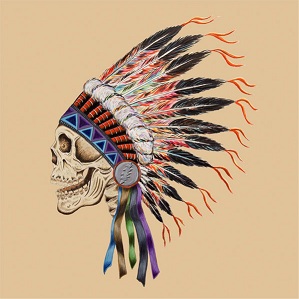
Spring 1990 is a live album by the rock band the Grateful Dead. It contains six complete concerts, on 18 CDs—one concert from each venue of their spring 1990 tour. It was released on August 31, 2012.
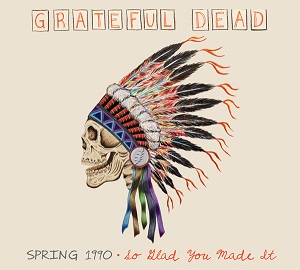
Spring 1990: So Glad You Made It is a two-CD live album by the rock band the Grateful Dead. It was recorded in March 1990, and contains selections from the band's 18-CD box set Spring 1990. It was released on September 18, 2012.

Flashback with the Grateful Dead is an album by the rock band the Grateful Dead. It contains ten songs, selected from eight of their studio albums that were originally released between 1969 and 1989. The compilation was released on CD on the Flashback label, a subsidiary of Rhino Records, on April 5, 2011.

Wake Up to Find Out is a three-CD live album by the rock band the Grateful Dead. It contains the complete concert recorded on March 29, 1990, at Nassau Coliseum in Uniondale, New York. It was released by Rhino Records on September 9, 2014.

Sage & Spirit is a compilation album by the rock band the Grateful Dead. It contains ten songs – eight recorded in the studio and two live – selected from various albums. It was produced as a vinyl LP in a limited edition of 4,000 copies, and released on April 3, 2019 in conjunction with Record Store Day.

Dave's Picks Volume 47 is a three-CD live album by the rock band the Grateful Dead. It contains the complete concert recorded on December 9, 1979, at Kiel Auditorium in St. Louis, Missouri. It was released on July 28, 2023, in a limited edition of 25,000 copies.



















